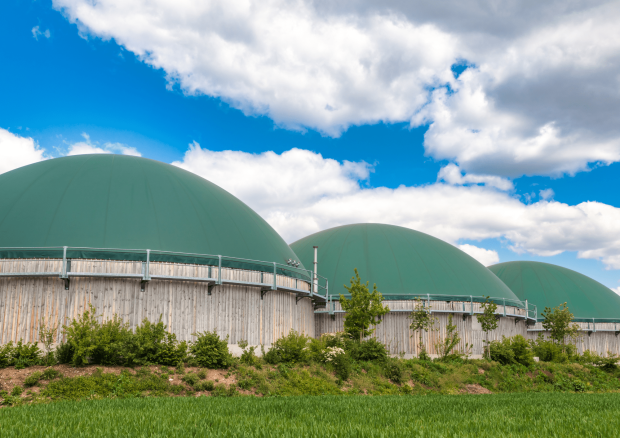The BETA TC prepares a guide to promote the sustainable development of biogas and biomethane in Catalonia
This document is accompanied by an informative video showing success stories in the creation of new biogas plants in Catalonia

One of the results of the Biogàs Impulsa’t project, jointly promoted by the Bioenergy Cluster of Catalonia, the BETA Technological Center of the University of Vic – Central University of Catalonia (UVic-UCC) and the company Envolta Energia, has been the elaboration of the Guide for the sustainable development of biogas and biomethane in Catalonia. It is a document that is accompanied by an informative video showing successful cases in the creation of new biogas plants in Catalonia, both for the livestock sector and for waste management companies.
The guide, aimed at the general public, consists of six chapters. It explains in detail what biogas is, the biogas sector in Europe, the current biogas situation, success stories based on “exemplary” biogas plants in Catalonia, pioneering countries in promoting biogas and biogas challenges in Catalonia. For Ricard Carreras, head of Territorial Projects at CT BETA, “there is a lot of interest in carrying out biogas projects in Catalonia, but we still have to explain very well what can be done and how”.
The Guide for the sustainable development of biogas and biomethane in Catalonia was publicly presented at the second edition of the Biogas Forum of Catalonia, which took place on September 28 in Granollers. In that event, representatives of CT BETA presented this guide coinciding with the presentation of the results of the Biogàs Impulsa’t project.
The future of biogas plants in Catalonia
The current geopolitical scenario and the instability of fossil fuel prices have brought to the surface throughout Europe the need to decarbonize the energy sector. In this sense, the Department of Climate Action of the Catalan Government has set the objective of creating 90 new biogas plants in Catalonia by 2030, in addition to the 68 that already exist today. Most of the current facilities are located in wastewater treatment plants, others are designed to valorize livestock waste and a smaller part are located in urban waste treatment plants. With this increase, biogas production in Catalonia is expected to reach 3.3 TWh per year by 2030, equivalent to 13% of current natural gas consumption.
Biogas can be used as fuel for vehicles, injected into the natural gas network, and used as a generator of electricity and heat. Apart from the production of biogas itself, one of the reefs that remain to be solved is the connection to the natural gas distribution networks, from the transformation into biomethane. At the moment, only 5 of the 68 current facilities are connected in this way.
An opportunity to valorize organic waste
In areas such as Osona, with significant livestock and meat farming activity, centralized biogas plants are emerging as one of the most viable collective strategies for dealing with the high surplus of livestock manure and organic waste generated. It is estimated that in Osona only 50% of the livestock manure can be applied as organic fertilizer in crop fields, so it is necessary to find other ways of management, treatment and recovery.
Faced with this reality, last April researchers from CT BETA already presented the results of a report that identified and quantified the types of organic waste and by-products generated in Osona, which could potentially be valorized in biogas plants, as well as the most appropriate technological design model for the plant. In this sense, not only livestock manure but also meat waste, sewage sludge, whey from the dairy sector and municipal organic waste, among others, are involved.
Accelerating implementation in a sustainable way
In the current context, biogas can bring environmental benefits, such as decarbonization and greenhouse gas reduction. It can also bring economic benefits, thanks to new value chains based on the bioeconomy, and a number of social benefits, such as job creation and increased energy sovereignty.
Despite its great potential, Catalonia lags behind European countries such as France, Italy, Germany and Denmark in biogas production. However, to deploy this potential it is still necessary to face a set of political, legal and administrative challenges, but also sectorial and territorial, as well as social and research challenges. To help solve this great challenge, the three partners of the Biogàs Impulsa’t project hope that both the new guide and the video and the dissemination activities to be carried out throughout the territory will help to overcome some of these barriers and bring the different agents closer together.
